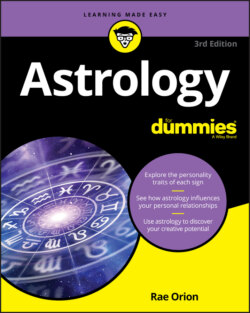Читать книгу Astrology For Dummies - Rae Orion - Страница 43
The History of Astrology: 5,000 Years of Cosmic Ups and Downs
ОглавлениеIN THIS CHAPTER
Appreciating early astrology
Considering classical times
Meandering through the Middle Ages
Relishing the Renaissance
Witnessing the waning of astrology
Welcoming the modern revival
In 410 BCE, a Babylonian astrologer cast a horoscope for a child born on April 29th. That chart, the nativity of one “son of Shuma-usur, son of Shumaiddina, a descendant of Deke,” is the oldest natal chart we have. It’s easy to imagine the astrologer speaking reassuring words to the child’s parents (assuming it was they who commissioned this horoscope). He would have seen that the Sun was in Taurus and the Moon in Libra, a peaceful, pleasure-loving combination. Venus in Taurus and Jupiter in Pisces would have delighted him, for both planets were strongly placed in signs they rule: good omens in anyone’s estimation. The chart had its challenges — no chart is without them — but by and large, he might have thought it an agreeable horoscope. Surely the child’s parents would have been glad to hear his assessment — that is, unless they were hoping for a military leader. This chart leans toward the arts.
By the fifth century BCE, when this chart was drawn up, astrology was thriving. In this chapter, I take you through the story of astrology in the western world, its periods of popularity in classical times and the Renaissance, the centuries of censure when it was denigrated and dismissed, and the times when it came roaring back to life, as in our own day.
